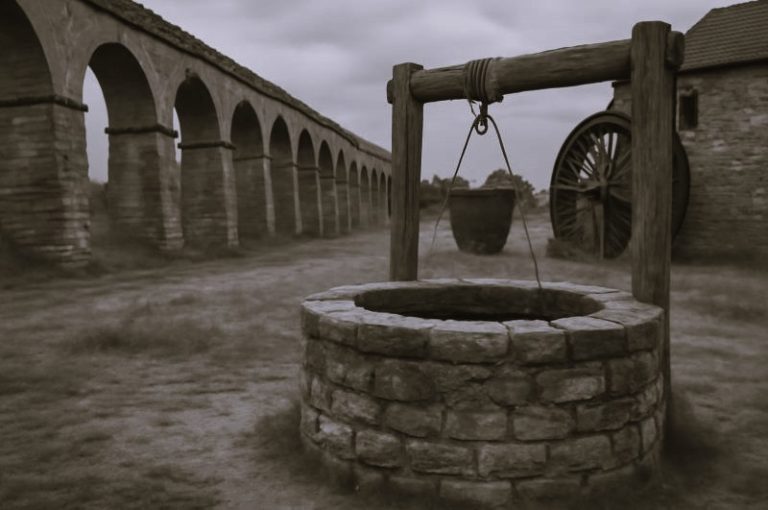
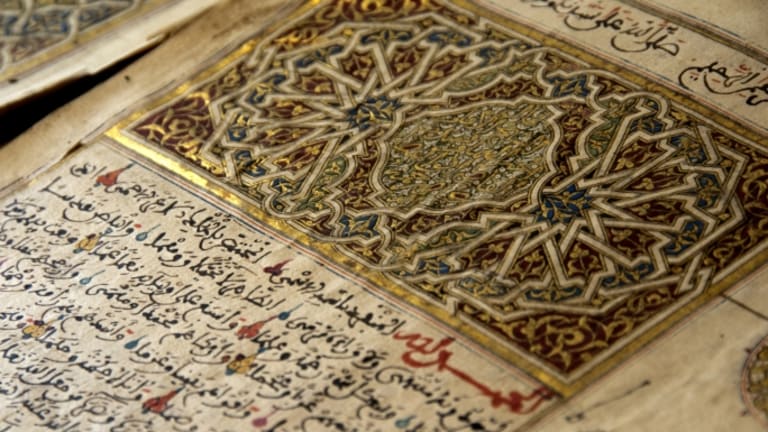
These ancient manuscripts cover every aspect of human endeavor.

Curated/Reviewed by Matthew A. McIntosh
Public Historian
Brewminate
Introduction
Timbuktu, Mali, is the legendary city founded as a commercial center in West Africa nine hundred years ago. Today it is synonymous with the phrase “utterly remote,” but this was not always so. For more than six hundred years, Timbuktu was a significant religious, cultural, and commercial center whose residents traveled throughout Asia, Africa, and Europe. Timbuktu was famous for educating important scholars who were well known throughout the Islamic world. Many individuals traveled to the city to acquire knowledge; others came to acquire wealth and political power.
Situated on the edge of the Sahara Desert, Timbuktu was famous among the merchants of the Mediterranean basin as a market for obtaining the goods and products of Africa south of the desert. However, Timbuktu’s most famous and long-lasting contribution to Islamic and world civilization is the scholarship practiced there. By at least the fourteenth century, important books were written and copied there, establishing the city as the center of a significant written tradition in Africa.
These ancient manuscripts cover every aspect of human endeavor. The manuscripts are indicative of the high level of civilization attained by West Africans during the Middle Ages and provide irrefutable proof of a powerful African literary tradition. Scholars in the fields of Islamic Studies and African Studies believe that analysis of these texts will cause Islamic, West African, and World History to be reevaluated. These manuscripts, surviving from as long ago as the fourteenth century, are remarkable artifacts important to Malian and West African culture. The exhibited manuscripts date from the sixteenth to eighteenth century.
The manuscripts on view are from the Mamma Haidara Commemorative Library and the Library of Cheick Zayni Baye of Boujbeha, two of the most noteworthy institutions in the Timbuktu area. As part of its continuing effort to create a universal collection of recorded knowledge from all geographic areas and all historical eras, the Library of Congress is particularly proud to have the opportunity to exhibit these important cultural artifacts from Mali. The Library is also pleased that copies of these manuscripts will be deposited in its collections and will be available for use by researchers and scholars.
The Manuscripts
Structure of the Heavens

This text was written to train scholars in the field of astronomy, a science that Islamic tradition traces back to Adam and to the Prophet Idris. The author discusses how to use the movements of the stars to calculate the beginning of the seasons and how to cast horoscopes, among many other aspects of astronomy. Displayed is a diagram demonstrating the rotation of the heavens.
A Poem on Islamic Law

The author of this poem is instructing students of Islamic law about the rights of orphans and married women. Verse is used as an aid to the student’s memory.
The Law of Inheritance

Islamic inheritance law is a highly regulated system in which individuals receive legacies depending upon their degree of relationship to the deceased. This work explains that system and elaborates upon its basis in the Koran.
Laws of Commerce in Verse

This volume delineates the obligations of parties to commercial exchanges and contracts. The author focuses on sales and how individuals loaning money are to be protected in commercial transactions. Verse is used to aid in memorizing the text.
Songhai Empire and Islam

The Songhai Empire was one of the most important states in West Africa during the fourteenth and fifteenth centuries. Muslims lived in significant numbers within the empire’s domains. This work examines the history of the empire and discusses important questions of Islamic law which arose in the empire, including the status and rights of women and children in a Muslim society.
The Law of Slavery

The author discusses slavery as it existed in West Africa during the seventeenth century. The examination of the subject is based on Islamic law and the author notes that the fundamental and original nature of humanity is that individuals are free. They may be enslaved only under certain very specific conditions governed by Islamic law.
Islamic Saints

Sufis (Islamic mystics) form an important element in Islamic society. The author provides an explanation of their mystical doctrine and practice. He also discusses recognizing pious and holy mystics as saints and the value of their intercession on behalf of believers. The text stresses the practice of the Tijaniyah order of Sufis. Displayed is a diagram explaining the religious life of the mystics, which revolves around the teaching of their master.
Islamic Mysticism
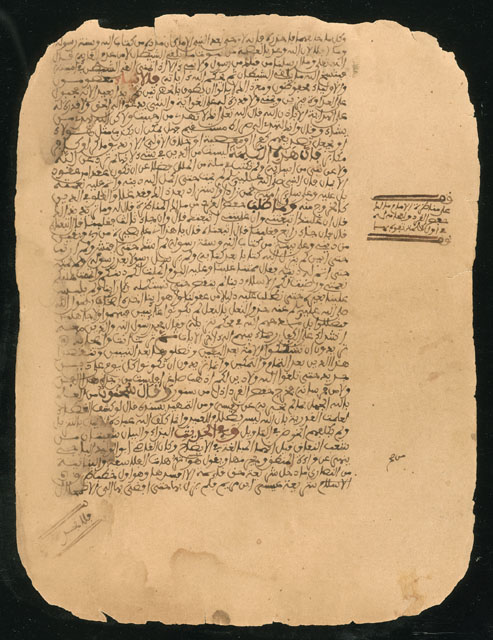
This text explains the basic principles of Sufi practice, pointing out the various stages of knowledge that mystics pass through as their knowledge of God increases through their strict application of devotional discipline. The author further discusses the relationship between belief, Sufi doctrine, and knowledge of God.
Philosophical Exchange
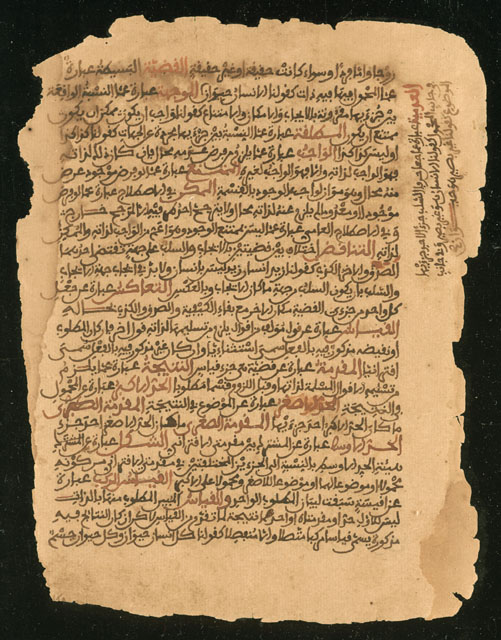
The author of this work examines the approach to various issues in Islamic law and society by theologians and scholars and offers an explanation of the pronouncements of these learned individuals.
The Rise and Setting Auspicious Stars

This collection of writings is based on the Greco-Roman legacy of astronomy with the addition of discoveries made by Muslim scholars. The text is presented in the form of a Platonic discourse. It includes an explanation of how to determine which star is ascendent and what that portends for the world.
Arithmetic Primer
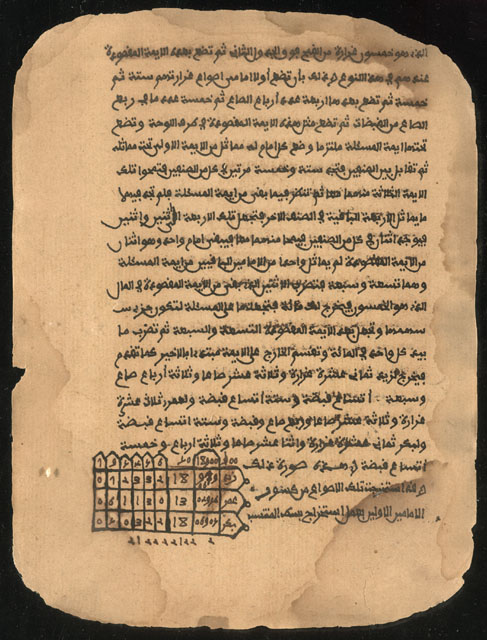
This commentary by the eighteenth-century scholar al-Rasmuki explains a work by al-Samlali the medieval mathematician. Using charts and examples of problems, the commentator demonstrates the rules of addition, subtraction, multiplication, and division. He also discusses the history and development of mathematics. The text was used extensively by students in Timbuktu and North Africa.
Islamic Doctrine

This work concentrates on the doctrine of the existence of God and God’s single and unique nature. The writer explains the meaning of the terms referring to the intimate knowledge of God, as well as belief in God, his angels, and his prophets.
Pillars of Iman (Faith)

The Pillars of Iman, the fundamental principles of the Islamic faith, are presented in this book. It covers the elements of faith, including belief in God, his angels and messengers, and the scriptures. Also discussed are belief in the last judgement and the inevitability of God’s will, regardless of human understanding or desire.
Law and Politics in the Songhai Empire

This treatise consists of the answers to seven questions asked of the author by the Emperor of Songhai. When discussing political and economic issues the author advises the Emperor that he is obliged to apply Islamic law strictly in these areas of life. Therefore, the Emperor needs to seek the advice of pious scholars.
Advice to Governors

The author of this work delineates the authority of governors and rulers and their limitations under Islamic law. He particularly calls attention to the need to understand the responsibility of power and its use. The author presents as a ruler’s obligation the provision of social justice and protection of the property of the state’s residents.
Disease and Cure in Timbuktu

This compilation of cures instructs the reader about methods of diagnosing and medicating the sick. The author also explains the use of animal, plant, and mineral substances as medications. Prayers and Koranic verses that are helpful against illness are included. Displayed are instructions for writing prayers, helpful to the sick, for use in amulets.
Ethical Behavior

The ethical conduct of business and government is the subject of the exemplary stories contained within this book. The author takes particular care to impress upon the reader the necessity of ethical behavior when occupying an official position.
An Argument for Peace

The author, a scholar and religious leader, urges warring factions to make peace and live in peace. He supports his argument with quotations from the Koran and allusions to the practice of Muhammad and his companions, which require the faithful to avoid discord, to reconcile, and to live in peace and tolerance.
Answer to a Royal Request

This document is a reply to the ruler of Massinah, Amir Ahmad, who ordered the arrest of a German traveler, Heinrich Bart, suspected of spying for the British. The author of the reply cites Islamic law as making the arrest illegal and declines to obey the amir. The scholar states that a non-Muslim entering the domain of Muslims in peace is protected and may not be arrested, have his property confiscated, or to be otherwise hindered.
The Benefits of Labor and Agriculture
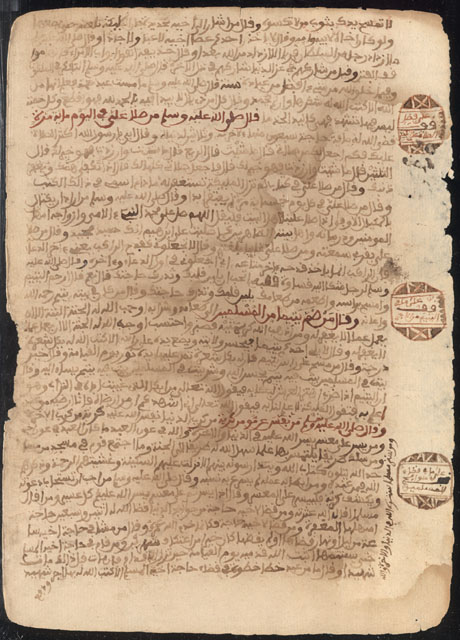
The social benefits of trades, crafts, and agricultural pursuits are discussed in this book. The author describes the contributions to society of various vocations and expresses the fundamental dignity that individuals acquire by working in socially useful employments.
Slave Trade

This is an agreement among merchants involved in the sale and transportation of slaves between Timbuktu in Mali and Ghadamas in Libya.
Gold as Currency

This commercial agreement focuses on buying and selling in several cities. It also refers to the cost of building houses in the city of Massinah. Gold is used as the standard of value in all transactions, which include the buying and selling of slaves, gold bullion, and gum arabic.
Freedom for a Slave
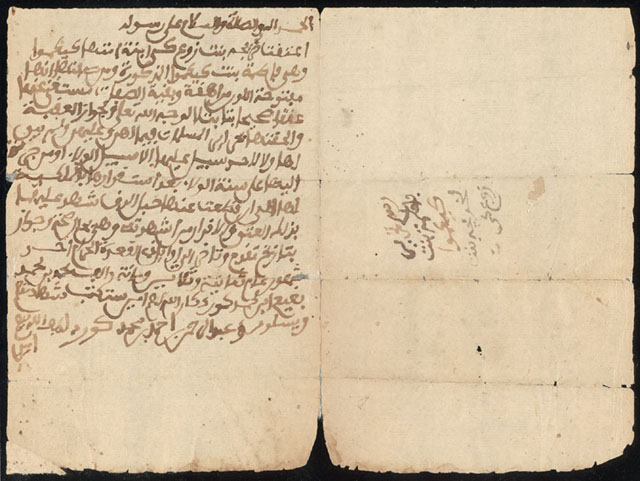
This certificate gives a detailed physical description of a woman who is being granted her freedom by her owner. The document is drawn in the manner prescribed by Islamic law.
To Timbuktu by Land

This map of Africa by the important sixteenth-century cartographer Abraham Ortelius displays a conception of the world that is land centered. West Africa and Timbuktu are shown situated in relation to the rest of Africa, demonstrating a world view that focuses on overland travel and still remembers Timbuktu as an important way station on the caravan routes.
To Timbuktu by Sea

This map from the eighteenth century shows clearly the change in trade and travel that had occurred by 1743. Rather than being viewed as part of the larger continent, West Africa is presented with a focus on the sea routes that had replaced the land caravan routes to the area.
By Air to Mali

Today maps often focus on single nations, as does this recent map of Mali. Perhaps this practice reflects the fact that flying involves less sense of crossing land and sea to arrive at a destination than did earlier means of travel. This map does not indicate where in the world Mali is, only what is within its borders.
Manuscripts a Continuing Legacy

As the photograph in this book indicates, manuscripts are still used in the education of Malians. The student is reading a Koran, which is illuminated in the traditional manner.
Malian Mosques


Pictured are the Sankore Mosque in Timbuktu (top) and the Grand Mosque in Jenne (bottom). The size and elaborate construction of these edifices demonstrates the continuing cultural force of Islam. The Sankore Mosque was begun in the fourteenth century, and the Grand Mosque was built in the early twentieth century.
Originally published by the United States Library of Congress, 09.03.2003, to the public domain.





